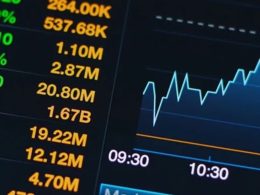Below are our trading range charts for ten major commodities. In each chart, the green shading represents between two standard deviations above and below the commodity's 50-day moving average. Moves to the bottom or below the green shading are considered oversold, while moves to the top or above the green shading are considered overbought. As shown, all ten commodities are currently at or below the bottom of their trading ranges. Anyone looking to gain long-term exposure to the commodities asset class has a good opportunity to get in at extreme oversold levels at the moment.















